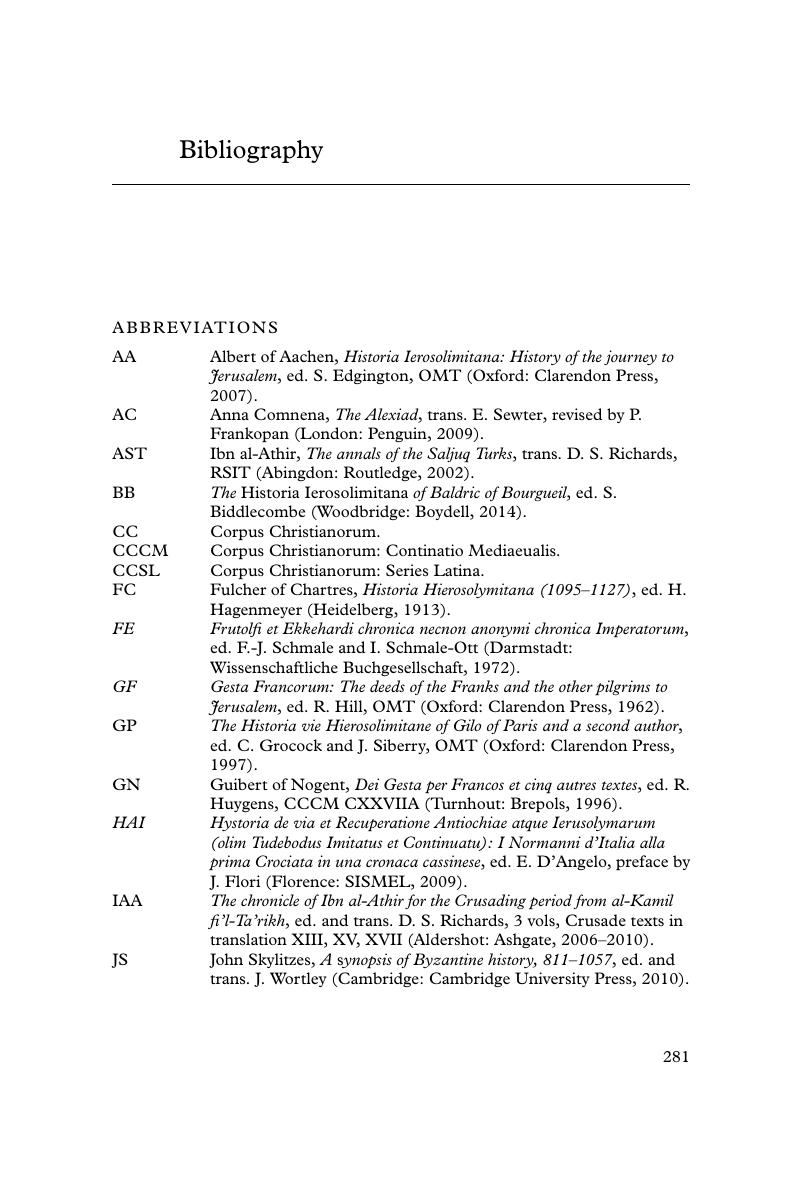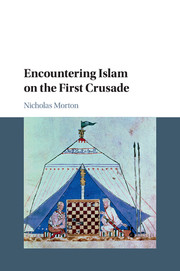Book contents
- Encountering Islam on the First Crusade
- Encountering Islam on the First Crusade
- Copyright page
- Dedication
- Contents
- Figure and Tables
- Book part
- Note on Translations
- Introduction
- 1 Predicates
- 2 The Launch of the First Crusade
- 3 The First Crusade and the Conquest of Jerusalem
- 4 Aftermath
- 5 The Impact of the Crusade
- Concluding Remarks
- Bibliography
- Index
- References
Bibliography
Published online by Cambridge University Press: 05 July 2016
- Encountering Islam on the First Crusade
- Encountering Islam on the First Crusade
- Copyright page
- Dedication
- Contents
- Figure and Tables
- Book part
- Note on Translations
- Introduction
- 1 Predicates
- 2 The Launch of the First Crusade
- 3 The First Crusade and the Conquest of Jerusalem
- 4 Aftermath
- 5 The Impact of the Crusade
- Concluding Remarks
- Bibliography
- Index
- References
Summary

- Type
- Chapter
- Information
- Encountering Islam on the First Crusade , pp. 281 - 312Publisher: Cambridge University PressPrint publication year: 2016



